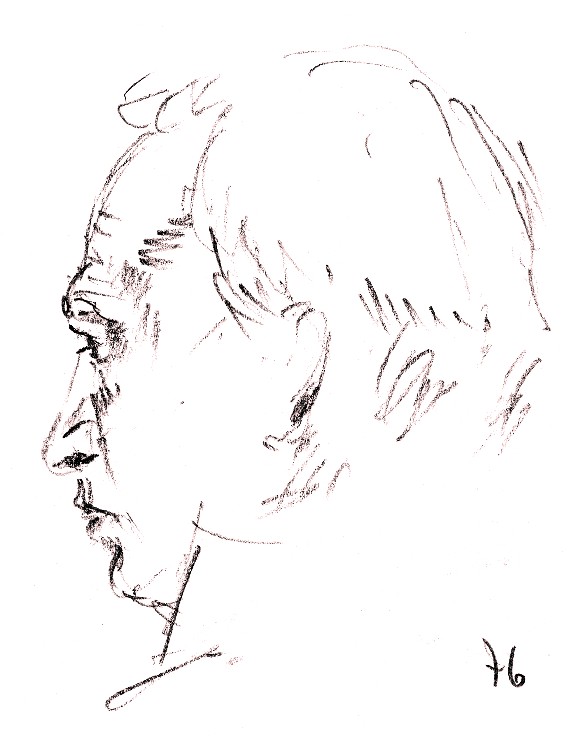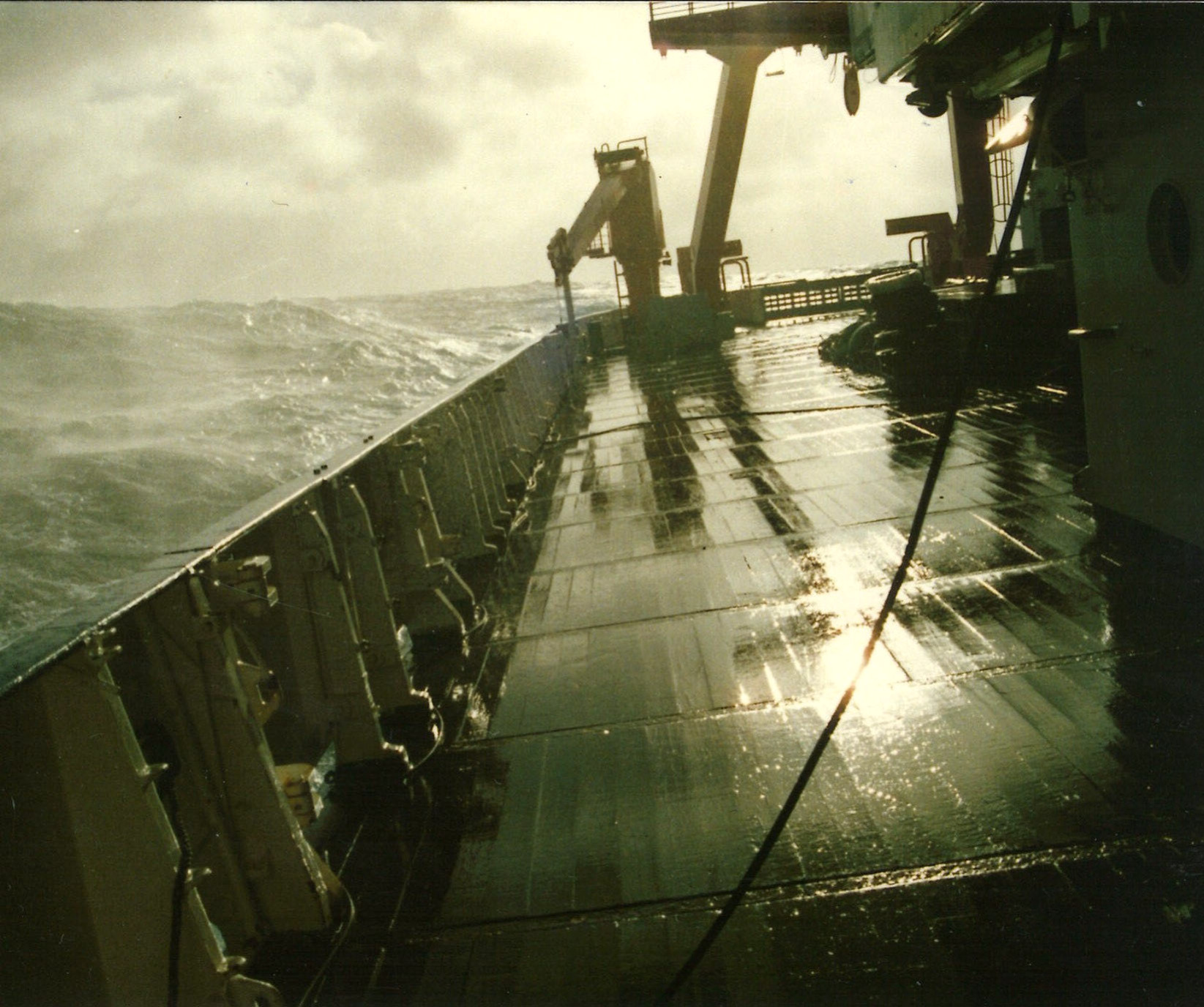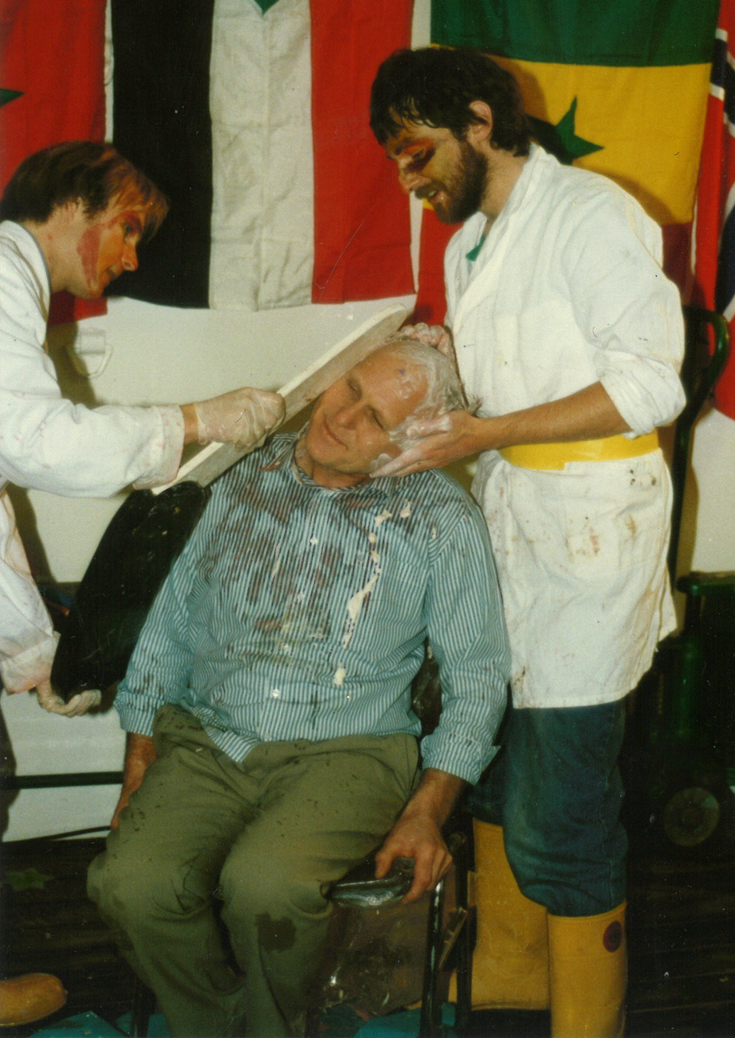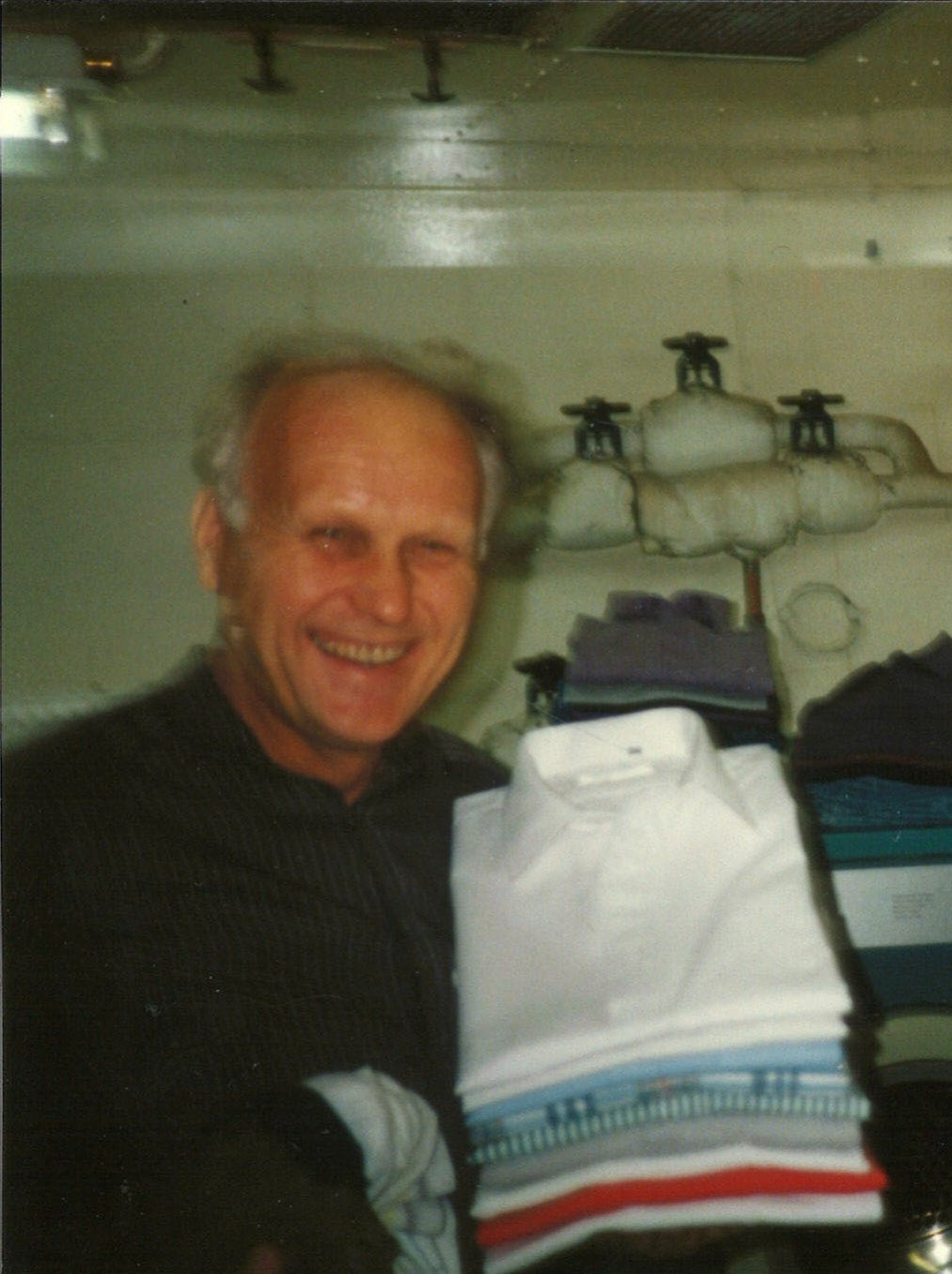Ship theory ‘before’ CFD – practised and reflected
Horst Nowacki to his ninetieth birthday
by Michael Schmiechen
Lieber Horst,
the invitation of Stefan Harries, to contribute to the special edition of ‘Schiffstechnik’ in honour of your ninetieth birthday, came as a surprise. Time flies; I felt that your eightieth birthday was yesterday!
My laudatio on that occasion (MS_HN_80.pdf) ended with the present of Arthur Schopenhauer’s ‘Die Kunst, recht zu behalten‘, with 38 stratagems to ‘win’ in disputes, not jointly to solve problems in discussions. In the decade since my ‘evaluation’ of our past history has not changed, but now I understand many problems, we faced and solutions we proposed, more profoundly.
About today’s omni-present power-tool CFD I know only very little. Thus I am not qualified to join the chorus praising your pertinent achievements. But I know and repeat again, that CFD is not a substitute for ship theory. But as Zeitzeuge I modestly, of course heavily biased, contribute how I practiced and experienced ship theory for seventy years without CFD, how I succeeded to solve the very different, very difficult problem of the very diverse clients of VWS, the former Preußische Versuchsanstalt für Wasserbau und Schiffbau auf der Schleuseninsel im Tiergarten.
We first met on Hermann Föttinger Saal end of October 1954, when I arrived at age 22.5 as cand ing from TH Braunschweig at TU Berlin. According to my impression you had already been a respected authority, Saal-Direktor, being ‘much’ younger than myself. Although our desks were very close, our ways of thinking were very different, I guess from birth on.
And this difference has of course not changed during our very different professional careers and related outputs. While you studied ‘pure’ naval architecture, I studied ‘only’ marine engineering. Thus very different aspects of ship theory and ship technology, in fact only very small sections of both, have been of concern to us.
Roughly speaking you have followed Georg Weinblum’s ideas, while I followed Fritz Horn’s visions. And I have been very lucky: Whatever I was supposed to do, I always was absolutely free to do it my way, and to teach what I found necessary for professional problem solving. Most of my lectures in forty years took place at the Versuchsanstalt, being my personal duty as apl. Prof. of course after hours.
Many of the problems I had to solve concerned parameter identification. But contrary to a widely met opinion these problems are not of computational nature, but they are primarily of conceptual nature, on any level of abstraction subjects lebendiger Anschauungen in the spirit of Goethe.
Parameters of models represent physical properties of systems. The models in terms of ship theory, have of course to be conceived before (their) properties can be identified, computationally or experimentally. At this stage Goethe’s dictum comes to mind:
Typical examples are trust-worthy ship powering trials. Horn’s proposal had already been discussed at the 4th ITTC at VWS 1937, tested before at various model basins although with the insufficient conceptual, computational and instrumental tools still at hand during those days. Even in science fiction digital computers did not yet occur. And ‘meta-physics’, even the most basic theory of theories, was, and still is, far beyond the horizon of naval architects, to their disadvantage not being taught to them.
Since my first tasks at VWS, concerning water vehicles and their water ways, all my work on rational theories and meta-theories of ship technology (and cosmology) has been based on an extremely simple principle: Words outside languages are meaningless; and magnitudes obtain their values only in the coherent contexts of over-all models. In ontology this powerful approach is called holistic.
Accordingly all my lectures and many of my papers started with the detailed discussion of the dual structure of languages and its epistemic implications. Already during my schooldays, at the Sachsenwald-Schule, I adhered to the holistic world view and was impressed by the power of formalism, of the axiomatic method in particular.
Any other approach ends-up in an infinite regress, in unending ‘research’, reminding of the old lady, who knew, that our Earth cannot rest on one turtle only, but rests on turtles all the way down. Hermann Schlichting explicitly put an end to this type of research on boundary layers with his famous ‘Grenzschicht-Theorie’, − and he came from Göttingen to teach even undergraduates at Braunschweig the principles of hydrodynamics.
Although I have again and again demonstrated the power of the holistic approach, ship theoreticians have not been motivated to take advantage and to derive reliable full scale data, necessary to validate the results of their computations. A particularly instructive example is my rather recent re-evaluation of the REGAL trial (REGAL_trial.pdf).
The transparent method, I have efficiently practiced in various projects since 1998 and published in many papers, is now being re-invented auf Schiffbauern-Art, ignoring the state of development. The claim that it is hard to understand my simple procedure is a particularly poor excuse; the doctrine followed is: Not invented here!
At my 2nd INTERACTION Berlin ’91, shortly after the re-unification of Germany, Klaus Wagner of Rostock instantly understood what I was talking about and immediately sent me data, to be analysed. And he is still the most careful lector of my related work and a passionate supporter of my rule driven approach.
Basic conceptual models are of course the balances of mass, momentum and energy, but their implications need be understood. Surprisingly that knowledge is not widely met. As an example I mention ship hull-propeller interaction. The related results of my first project at the Versuchsanstalt have been banned into the basement, not being in accordance with the superstition of my bosses.
But as it happens my results became the basis of my rational theory of ship propulsion, flourishing since sixty years. I only mention my final, very detailed evaluation of my quasi-steady model trial of 1986, taking only two minutes in the tank! (Quasi-steady model trial 1986.zip).
My evaluation in 2018 should of course have been finished before the trials with METEOR in the Greenland Sea at heavy November weather in 1988. But apart of other interests and duties the difficult problems took me another thirty years to arrive at the solution satisfying rational criteria. In this context it is worth noting, that quasi-steady tests can be performed any time at any sea state and, as I have shown, requiring no thrust measurements.
In this context my design and model tests of an energy wake adapted ducted propulsor comes to mind, work in which the concept of thrust did not even occur. This random example demonstrates, that the naive model of a propeller overcoming the resistance of a hull, though still popular, is inadequate, not to say obsolete. But I notice uses of CFD, performed in the conceptual clothes of our great-grand-fathers, reminding me of the first usage of digital computers at Harvard University, to re-compute and re-print the tables of logarithms.
It is only necessary to put an end to the incredibly careless analyses of the data − to be obtained with today’s instrumentation at only few extra costs, if any. Further developments of the method of quasi-steady trials and monitoring require such full scale measurements and analyses. But so far all my attempts to obtain pertinent data have not been successful, maybe due to the following fact.
During my repeated proposals to rationalise the basic standard DIN 1313 ‘Grössen’ I learned, that according to the rules of DIN, ISO et alii standards need not at all to be based on science, but only on the consensus of parties interested, e. g. to protect their businesses − and/or their superstitions. (On_’magnitudes’,_alias_’quantities’.pdf).
Typical for this type of standards are the rules of ITTC, ISO and IMO concerning ship powering trials and monitoring. I already opposed the first Japanese proposal and provided the draft of a rational procedure, filed by JISC/JMSA dated 1998-06-23. The final version drafted by MARIN, in essence relying on a ‘joker’, has been adopted without any opposition from university tanks. Results of trials evaluations according to these rules, if any would be published, would be of no use for scientific purposes. As a client I would not buy such results!
Last, but not least, I mention my reconstruction of the explicit, more than two hundred years old Euler-Lagrange equations in my doctoral thesis, triggered by my experience gained during evaluations of planar motion tests with ideal bodies, as torpedoes were called those days, I guess that ‘caution’ was as useless as the locking of doors; our Russian colleagues may have received our results earlier than our clients.
In the limited world view of my esteemed colleague Klaus Eggers the Euler-Lagrange equations, my work horses for decades, have only been crumbs of chalk on the black board. Such cardinal misjudgements and conceptual mistakes may happen and may nolens volens be excused: But that educated people repeat and spread the nonsense is an open scandal. The present state of cosmology is a particularly drastic example of ‘scientific dogmatism’ and of my concern (and_Newton_was_right.pdf).
In the meantime I got used to lack of response to my results, confirming the need to continue my mission under the slogan: ‘Sapere aude!’, in Kant’s translation: “Habe Mut, Dich Deines eigenen Verstandes zu bedienen”, again for short: ‘Dare, to think yourself!’
In conclusion of my short review of problems, which kept me busy (and young) for seven decades, I note that the whole development of my modest contributions to ship theory, as I understand it, is documented in over six hundred annotated papers, bibliographies and letters on my website (m-schmiechen.de). According to the law my website is a publication proper and thus is regularly permanently archived by Deutsche Nationalbibliothek.
As Johann Wolfgang Goethe remarked in a conversation with Johann Peter Eckermann on 18.09.1823 I claim:
With all my best wishes for many happy returns of your birthday and for the continuation of our discussions, aiming at rational ship theory,
Dein Michael.



